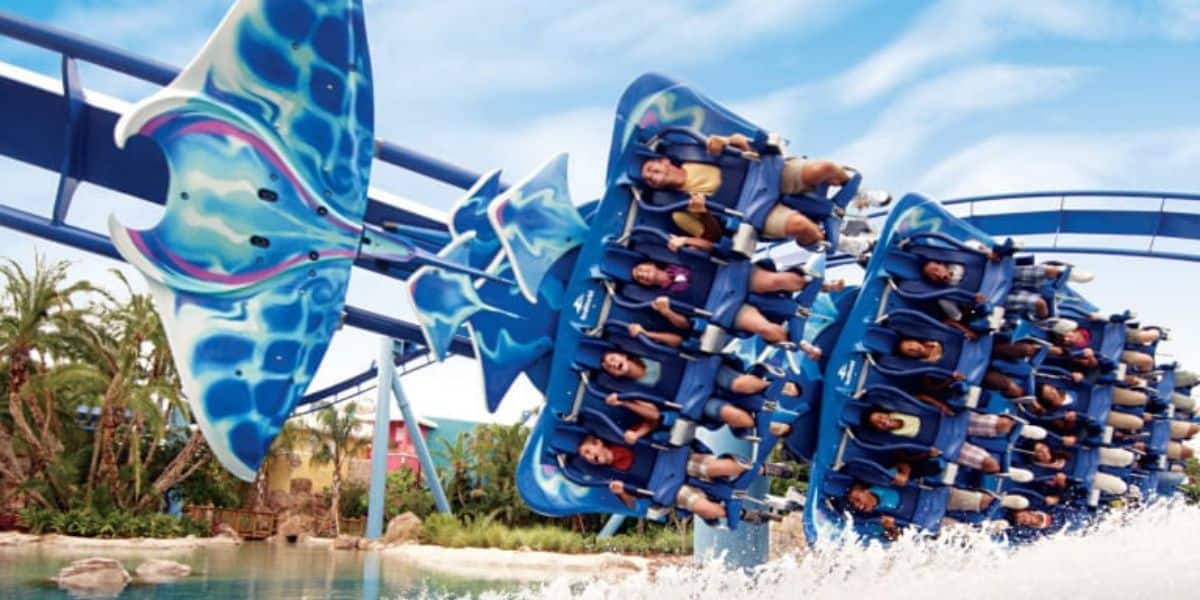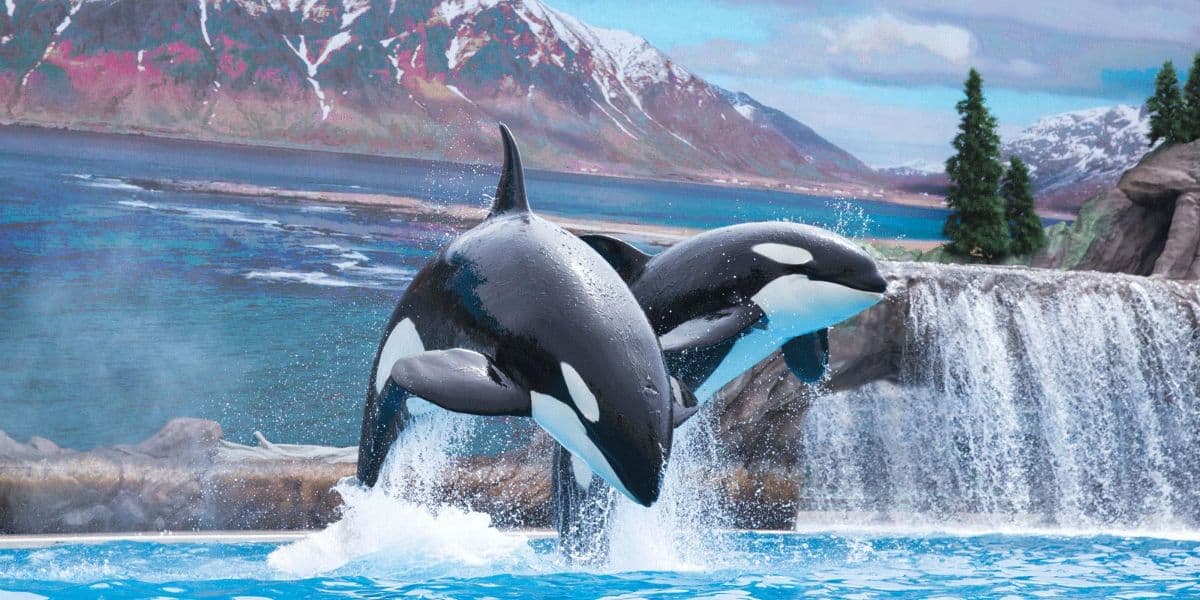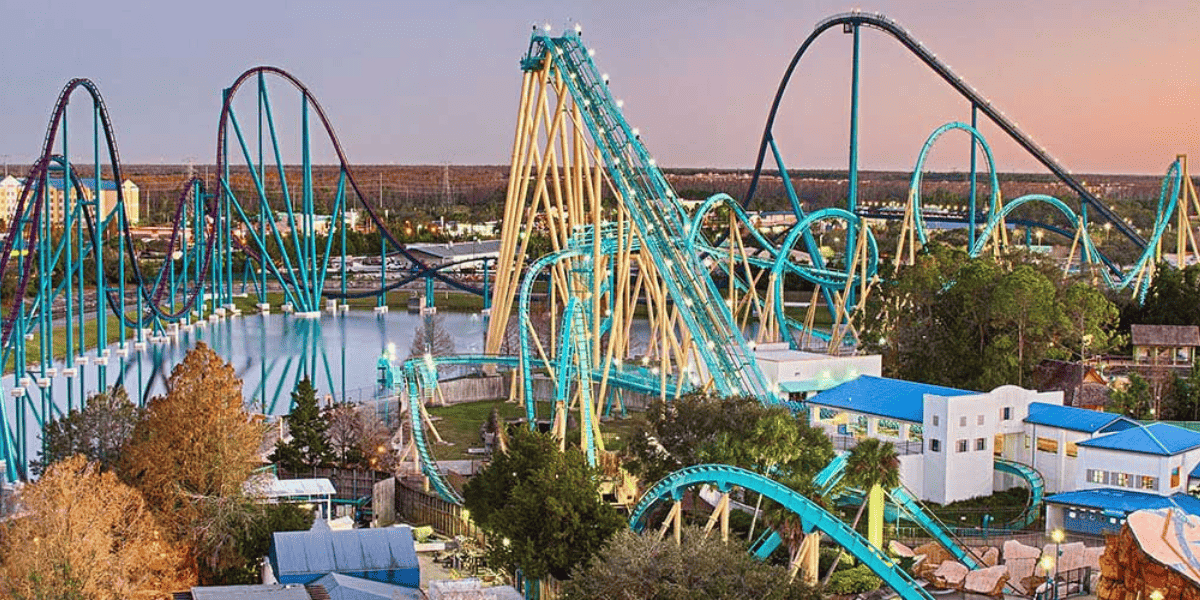In terms of hurricanes, this year has been challenging for Florida’s theme parks. Fortunately, SeaWorld has a solution to prepare for the future: shifting its focus indoors.
Thanks to its geographical location, Florida is renowned as a hurricane hotspot. While it faces recurrent storms all year round, things really ramp up come hurricane season (which typically runs from June to November), with 2024 being no exception.
Hurricanes and Florida’s Theme Parks In 2024
This year, Hurricanes Helene and Milton impacted theme park operations. In September, Helene canceled Mickey’s Not-So-Scary Halloween Party at Walt Disney World Resort and Halloween Horror Nights at Universal Orlando Resort. Meanwhile, SeaWorld Orlando and Busch Gardens temporarily closed their gates for the day to ensure the safety of both their employees and guests.

Just weeks later, Milton barreled towards Florida. Unlike Helene, it headed straight for Central Florida. This time around, all of Orlando’s theme parks closed for at least a day, with guests asked to shelter at their resorts.
At Disney World, minor damage was reported across the resort. Some hotels—such as Disney’s Contemporary Resort and Disney’s Polynesian Village Resort—also experienced flooding, with the latter particularly affected after high winds and rain damaged the roof and evacuated guests mid-hurricane. Weeks later, some reservations were still being affected by the damage.
There is unfortunately a pretty large hole on the backside of JTA from the strong winds of Milton
There is unfortunately a pretty large hole on the backside of JTA from the strong winds of Milton pic.twitter.com/MBhGlgHofa
— Seaworld History (@SeaworldH) October 14, 2024
There was also some damage over at SeaWorld Orlando, where pictures later emerged of a hole ripped into the side of the theme park’s iconic Journey to Atlantis attraction.
How Do Hurricanes Impact Attendance and Revenue?
Unsurprisingly, hurricanes have a huge impact on how much money a theme park makes. During a recent revenue call on November 7, SeaWorld Orlando claimed that storms are to blame for its lower-than-expected attendance in the third quarter of 2024.

This isn’t the first time we’ve heard a theme park claim that poor weather conditions have played a role in dwindling attendance or profits. Thanks to climate change, there’s also every chance that this problem will get worse in the future, with extreme heat also posing a potential threat.
SeaWorld’s Anti-Hurricane Plan
While there’s not much theme parks can do about this fact (short of somehow solving the climate crisis, in which case, kudos), there are ways they can try to mitigate the impact recurrent storms have on their operations.
During its revenue call, SeaWorld Orlando revealed that it plans to invest in more indoor attractions. At present, the majority of the park’s rides—such as Manta, Kraken, Mako, and the recently-opened roller coaster Penguin Trek—are outdoors. That means that if a storm hits, the park will have no choice but to close, as the vast majority of its attractions will be inaccessible to guests.

Marc Swanson, CEO of United Parks & Resorts — which operates both SeaWorld and Busch Gardens theme parks – said that SeaWorld is “trying to do more indoor attractions” to give guests more options in rainy or extremely hot weather (via Attractions Magazine). He also added that they’re actively building more shaded structures and drink programs to counteract the Florida heat.
Case in point: the park’s upcoming indoor flying theater ride, which will simulate a journey above the Arctic. This is set to open in 2025, taking inspiration from a similar attraction that debuted at SeaWorld Abu Dhabi (which, coincidentally, is entirely indoors thanks to the extreme heat found in the United Arab Emirates) when it opened in 2023.

SeaWorld has gone all in on its attraction offerings in the past few years, churning out new roller coasters at a rapid rate. This follows backlash against the park’s use of marine mammals, specifically killer whales, for entertainment in the wake of the release of the documentary Blackfish (2013). Since the film’s release, all three U.S. SeaWorld parks (Orlando, San Diego, and San Antonio) have experienced a decline in attendance.
Do you think theme parks need to build more indoor attractions?
The post SeaWorld Plans To Move Indoors After Repeat Hurricane Threats appeared first on Inside the Magic.



